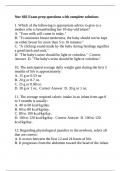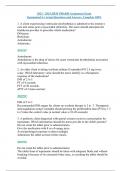Exam (elaborations)
NUR 602 Chamberlain College Of Nursing -Nur 602 Exam prep questions with complete solutions.
- Course
- NUR 602
- Institution
- Chamberlain College Of Nursing
NUR 602 Chamberlain College Of Nursing -Nur 602 Exam prep questions with complete solutions.
[Show more]












